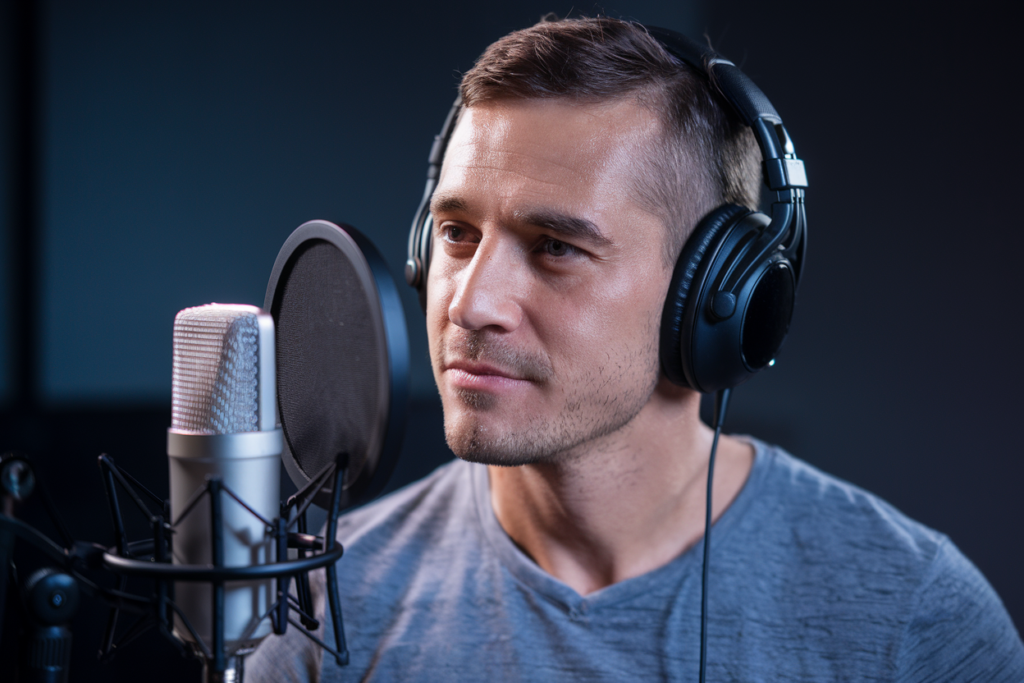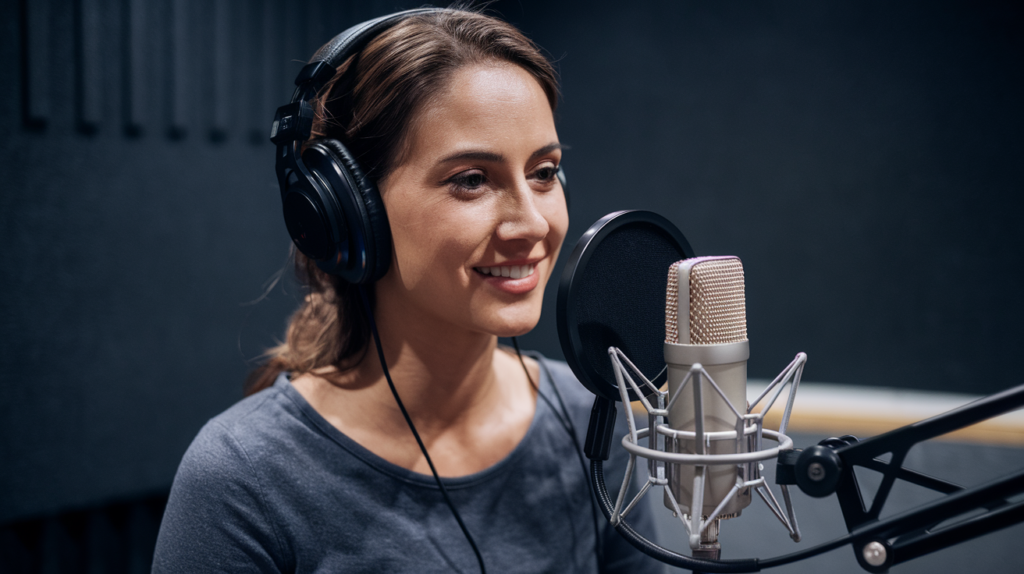Key Takeaways
- Understanding Regional Variations: Romanian accents vary significantly across regions like Transylvania, Moldavia, and Wallachia; each has unique phonetic characteristics that voice actors should consider.
- Key Features of Romanian Accents: Essential aspects include vowel sounds, syllable stress, consonant clarity, and intonation patterns which all contribute to the authenticity of the accent.
- Impact on Character Authenticity: A well-executed Romanian accent enriches character development and storytelling by reflecting cultural nuances and enhancing relatability for audiences.
- Audience Connection: Mastering the Romanian accent helps create familiarity and trust with listeners, fostering a deeper emotional connection during performances.
- Practical Techniques for Mastery: Engaging in listening exercises, imitation practices, and utilizing phonetic training resources are effective methods to refine your Romanian accent skills.
- Navigating Challenges: Be aware of common mispronunciations and cultural nuances in different dialects to improve clarity and authenticity in your voice acting.
Ever wondered how to nail the Romanian accent for voice acting? Selecting the right accent can make or break your performance, especially when it comes to authenticity. Whether you’re auditioning for a role or creating content that requires a touch of Eastern European flair, mastering the nuances of the Romanian accent is crucial.
Understanding Romanian Accents
Mastering Romanian accents is crucial for voice actors looking to enhance their performances. The right accent can elevate a character’s authenticity and connect more deeply with the audience.
Overview of Romanian Language Variations
Romanian features several regional dialects, reflecting its rich cultural heritage. These variations stem from historical influences, including Latin roots and neighboring Slavic languages. In Romania, you’ll encounter distinct accents in regions like Transylvania, Moldavia, and Wallachia. Each area brings unique phonetic characteristics that voice artists should consider when preparing for roles or auditions requiring a specific accent.
Key Features of Romanian Accents
Understanding key features helps distinguish between different Romanian accents:
- Vowel Sounds: Romanian has five primary vowel sounds that can vary in pronunciation across regions.
- Syllable Stress: Stress often falls on the penultimate syllable, which may differ in various dialects.
- Consonant Clarity: Certain consonants are pronounced distinctly; for example, “t” may sound harder or softer depending on the region.
- Intonation Patterns: Regional differences affect intonation and rhythm in speech, impacting emotional delivery.
Familiarizing yourself with these elements enhances your voiceover skills. It allows you to adapt your performance effectively to match the desired character or narrative tone while appealing to diverse audiences seeking authentic representation.
Importance of Accent Selection in Voice Acting
Accent selection plays a crucial role in voice acting, influencing how audiences perceive characters and their authenticity. Mastering the Romanian accent can elevate your performance, making it more engaging and believable.
Impact on Character Authenticity
Character authenticity hinges on the details. A well-executed Romanian accent helps create relatable characters that resonate with listeners. When you adopt a specific accent, you immerse yourself in the character’s background, lending depth to their personality. For instance, using regional dialects can reflect cultural nuances that enrich storytelling. This attention to detail showcases your skills as a voice actor, enhancing your appeal as a voice talent for projects seeking genuine representation.
Enhancing Audience Connection
Connecting with the audience is essential for any voice artist aiming to leave an impact. An authentic Romanian accent fosters familiarity and trust with listeners. When they hear accents done right, they feel more drawn into the narrative. Engaging voiceovers elicit emotional responses and build rapport between characters and audiences. By mastering these accents, you position yourself as a versatile voice over talent capable of captivating diverse audiences while ensuring that every word resonates deeply within their cultural context.
Techniques for Mastering Romanian Accents
Mastering a Romanian accent involves consistent practice and attention to detail. You can elevate your voice acting skills by focusing on specific techniques.
Listening and Imitation Exercises
Listening to native speakers is crucial. Engage with Romanian films, music, or podcasts to familiarize yourself with the accent’s nuances. Pay close attention to vowel sounds and intonation patterns. Imitate what you hear; repetition helps solidify these elements in your voiceover repertoire. Try shadowing exercises where you speak along with audio clips, matching rhythm and pitch as closely as possible.
Using Phonetic Training Resources
Phonetic training resources offer invaluable insights into pronunciation specifics. Use online platforms that provide phonetic spellings of Romanian words, focusing on consonant clarity and syllable stress. Practice articulating challenging sounds using these guides, ensuring you’re capturing the essence of the accent accurately. Additionally, consider investing in language apps designed for accents—these often include tailored exercises for voice actors aiming to perfect their craft.
By integrating these techniques into your routine, you can enhance your ability to deliver authentic performances that resonate with audiences seeking genuine representation of Romanian characters or themes in their projects.
Challenges in Romanian Accent Selection
Selecting the right Romanian accent for voice acting poses several challenges that can impact performance quality. Understanding these obstacles helps you refine your skills as a voice actor, enhancing authenticity and connection with the audience.
Common Mispronunciations
Many common mispronunciations occur when navigating Romanian accents. These often stem from differences in vowel sounds and syllable stress compared to English. For instance, the pronunciation of “ă” (a schwa sound) can trip up even seasoned voice artists. Additionally, consonant clusters such as “str,” “dr,” or “tr” may confuse speakers unfamiliar with Romanian phonetics. Practicing specific words or phrases is essential to avoid these pitfalls and ensure clarity in your delivery.
Cultural Nuances to Consider
Cultural nuances play a significant role in accent selection. Each region of Romania has unique dialects reflecting local history and traditions. For example, the Moldovan accent differs markedly from the Transylvanian one, each carrying distinct emotional undertones and speech patterns. As a voice talent, it’s vital to recognize these subtleties to create relatable characters that resonate with listeners. Incorporating cultural elements enhances character depth while fostering an authentic connection with your audience.
Conclusion
Mastering the Romanian accent is key to elevating your voice acting skills. It not only adds authenticity but also allows you to connect more deeply with your audience. By understanding regional dialects and practicing specific techniques, you can create relatable characters that resonate on a personal level.
Pay attention to phonetic details like vowel sounds and syllable stress. Consistent practice through immersion in Romanian media will sharpen your skills. Embracing these nuances enriches storytelling and enhances your versatility as a voice actor.
As you continue honing this craft, you’ll find the right accent opens doors to diverse opportunities while ensuring each performance feels genuine and impactful. Your commitment to mastering the Romanian accent could truly set you apart in the competitive world of voice acting.
Frequently Asked Questions
Why is mastering the Romanian accent important for voice acting?
Mastering the Romanian accent is crucial for voice acting as it enhances authenticity and allows performers to connect more deeply with their audience. A well-executed accent can significantly impact how characters are perceived, making them relatable and believable.
What are the key features of a Romanian accent?
Key features of a Romanian accent include distinct vowel sounds, specific syllable stress patterns, clear consonant pronunciation, and unique intonation. Understanding these elements helps voice actors deliver performances that resonate with audiences by reflecting cultural nuances.
How can I practice mastering the Romanian accent?
To practice the Romanian accent, engage with native resources like films, music, or podcasts. Use listening exercises to imitate sounds and rhythms. Shadowing audio clips can help match pitch, while phonetic training resources provide insights into pronunciation specifics.
What challenges might I face when selecting a Romanian accent for voice acting?
Challenges in selecting a Romanian accent include mispronunciations due to unfamiliar vowel sounds and syllable stress differences compared to English. Specific pitfalls involve pronouncing “ă” and consonant clusters like “str,” “dr,” or “tr,” which require careful attention.
How does regional dialect influence character portrayal in voice acting?
Regional dialects reflect Romania’s rich cultural heritage and historical influences. Understanding these dialects allows voice actors to create authentic characters that embody local traditions and histories, adding depth and emotional resonance to their performances.







